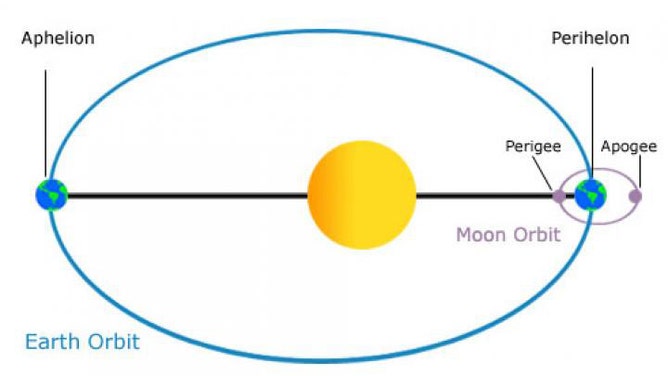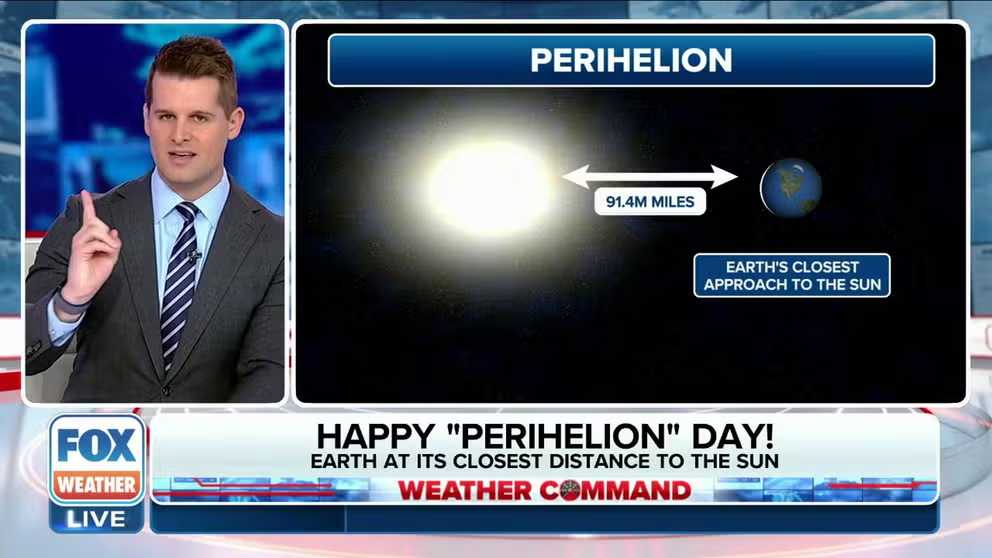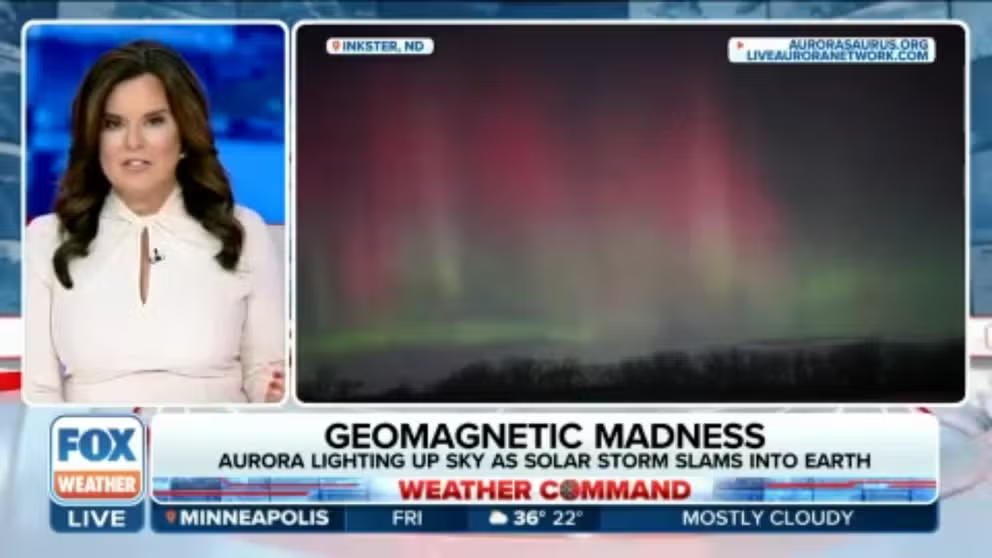Earth reaches its closest distance to the Sun Tuesday, marking Perihelion Day
Happy Perihelion Day! Earth reaches its nearest point in orbit around the Sun, known as Perihelion, at 7:38 p.m. on Jan. 2, 2024.
Happy Perihelion Day! Earth closest to Sun on Tuesday
Earth is at its closest distance to the Sun on Jan. 2, known as perihelion. Our planet is about 3.1 million miles closer to the Sun than at its farthest point in orbit.
Tuesday marks "Perihelion Day" for all Earthlings, the day in 2024 when our planet is closest to the Sun.
On the second day of this new year, Earth reaches its nearest point in orbit around the Sun at 7:38 p.m. The planet will be about 3 million miles closer to the Sun at this time than during its farthest point in orbit, known as aphelion.
Perihelion doesn't always happen on the same day or time every year, but on Earth, it occurs about two weeks after the winter solstice, also known as the shortest day of the year in the Northern Hemisphere.
2023 FINISHES AS WARMEST YEAR ON RECORD
Earth will be approximately 91.4 million miles from the Sun on Tuesday evening.
According to research from the University of California, Berkeley, the sunlight is about 7% more intense during perihelion than during aphelion.

Perihelion vs. Aphelion
(NASA)
Earth doesn’t experience a significant temperature change during perihelion or aphelion because the 7% difference in sunlight is relatively small.
However, because the planet orbits the sun at a 23.5-degree tilt, providing more sunlight to different regions of the globe, weather changes during our summer and winter seasons overwhelm minor changes compared to the Earth’s orbital distance to the sun.
In 2024, aphelion happens on July 5, when the Earth will be 94.5 million miles from the Sun.
2024 Sun salutations
Geomagnetic storm triggers vivid display of Northern Lights across the North Friday
FILE VIDEO: Skies lit up in jaw-dropping colors across North Dakota as a strong geomagnetic storm struck the Earth's atmosphere early Friday morning.
This year, there are multiple reasons to celebrate and study our solar system's star.
WHO WILL BE ABLE TO SEE THE APRIL 2024 TOTAL SOLAR ECLIPSE?
On April 8, 14 states across America, as well as parts of Mexico and Canada, will experience a total solar eclipse, known as the Great North American Solar Eclipse.
A total solar eclipse happens when the Moon passes between the Sun and Earth at its closest point in its elliptical orbit of the Earth. During a total eclipse, the Moon will completely block the face of the Sun, and only the solar corona will be visible. Totality is the only time during a solar eclipse when it's safe to remove your solar eclipse glasses.
The Sun is also forecast to reach solar maximum this year during its 11-year solar cycle. This period is when the maximum number of sunspots appear on the Sun's surface. Increasing solar flares and associated coronal mass ejections during this time in the solar cycle will mean more space weather, including the Northern Lights.
NOAA's Space Weather Prediction Center estimates we're close to the peak of Solar Cycle 25, forecast to occur between January and October 2024.

